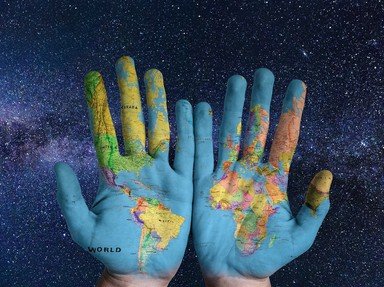Quiz Answer Key and Fun Facts
1. Mario J. Molina, Paul J Crutzen and F. Sherwood (Sherry) Rowland were joint winners of the 1995 Nobel Prize in Chemistry "for their work in atmospheric chemistry, particularly concerning the formation and decomposition of ozone". (Nobelprize.org). Of what nationality were these men respectively?
2. Caroline Mikkelsen was the first woman to set foot on Antarctica in 1935. As was the custom in those days various geographical features were named after prominent people e.g. Ross Ice Shelf, McMurdo Sound, Bellinghausen Sea, etc. To what geographical feature was Caroline Mikkelsen dedicated?
3. No Antarctic quiz would be complete without a 'Race to the Pole' question between Roald Amundsen (Norway) and Robert Scott (England). One reason that has been proffered for the demise of Scott's team is in the initial preparation and choice of supplies. These included 39 dogs (of which a few died), 19 Manchurian ponies (of which all died), three motor sledges (one of which was lost overboard and the other two conked out fairly early in the expedition), and 67 men to be used for man-hauling.
Fridtjof Nansen from Norway who was one the eminent explorers of the times spoke to Scott and said to him that he should take what supplies?
4. What was Emilio Palma's claim to fame?
5. Whilst there is speculation as to the veracity of the claim of being the first to fly over the North Pole, this American explorer was definitely the first person to fly over the South Pole on 28 November 1929. He also led many Antarctic expeditions including four for the US government and named part of Antarctica after his wife Marie.
6. Vinson Massif is the highest mountain in Antarctica measuring 4,892 metres (16,050 ft). Who first ascended this peak in 1966?
7. Another predominant explorer of the Heroic Age was Ernest Shackleton. Although he made numerous trips to the Antarctic he is probably best remembered for his 800 mile trek across Antarctica by sea to South Georgia Island to rescue other crew members who were stranded on Elephant Island after the sinking of 'The Endurance'. He also met his death in the Antarctic in 1922. Under what circumstances?
8. An annual event held in Antarctica started in 2005 and the first winner was Richard Donovan. In what field was this event?
9. Scott, Amundsen and Shackleton were arguably the most famous Antarctic explorers however Sir Douglas Mawson (Australia) cannot be left out either. One of his achievements was the first Australasian Expedition to Antarctica where he mapped the previously unexplored territory from the west of Scott's 'Terra Nova Expedition' to the east of the 'Gauss Expedition', a distance of approximately 2000 miles. In addition to exploration in what other field was he very eminent?
10. Although not particularly famous as individuals, in 1933 these Antarcticans were the first to set foot as part of Richard Byrd's second Antarctic expedition.
Source: Author
Exit10
This quiz was reviewed by FunTrivia editor
bloomsby before going online.
Any errors found in FunTrivia content are routinely corrected through our feedback system.

